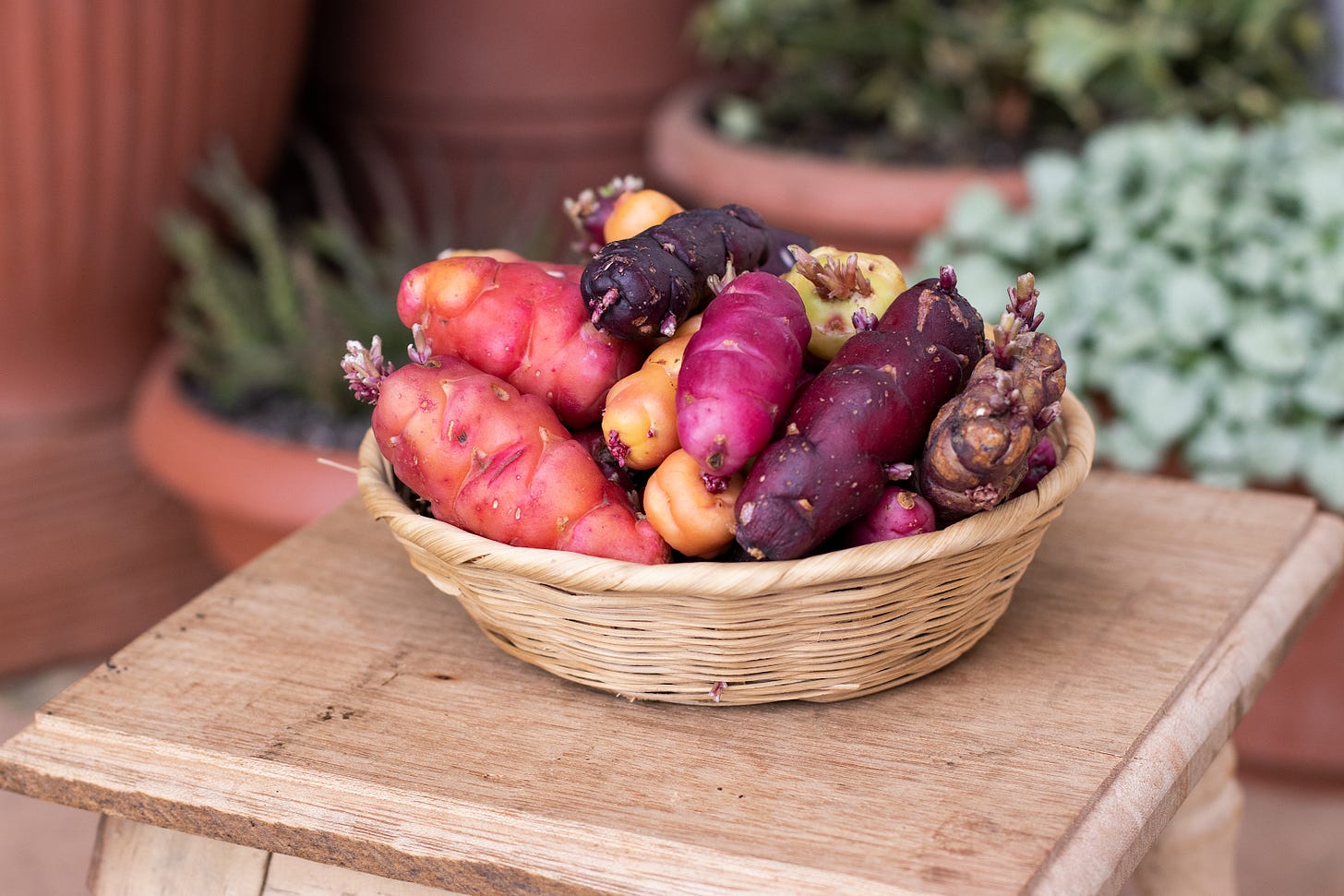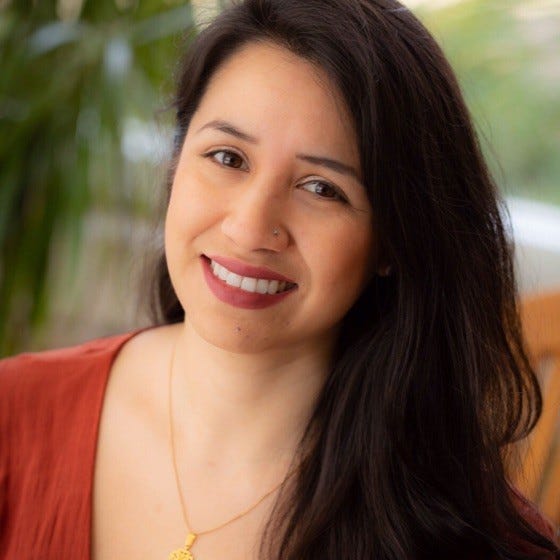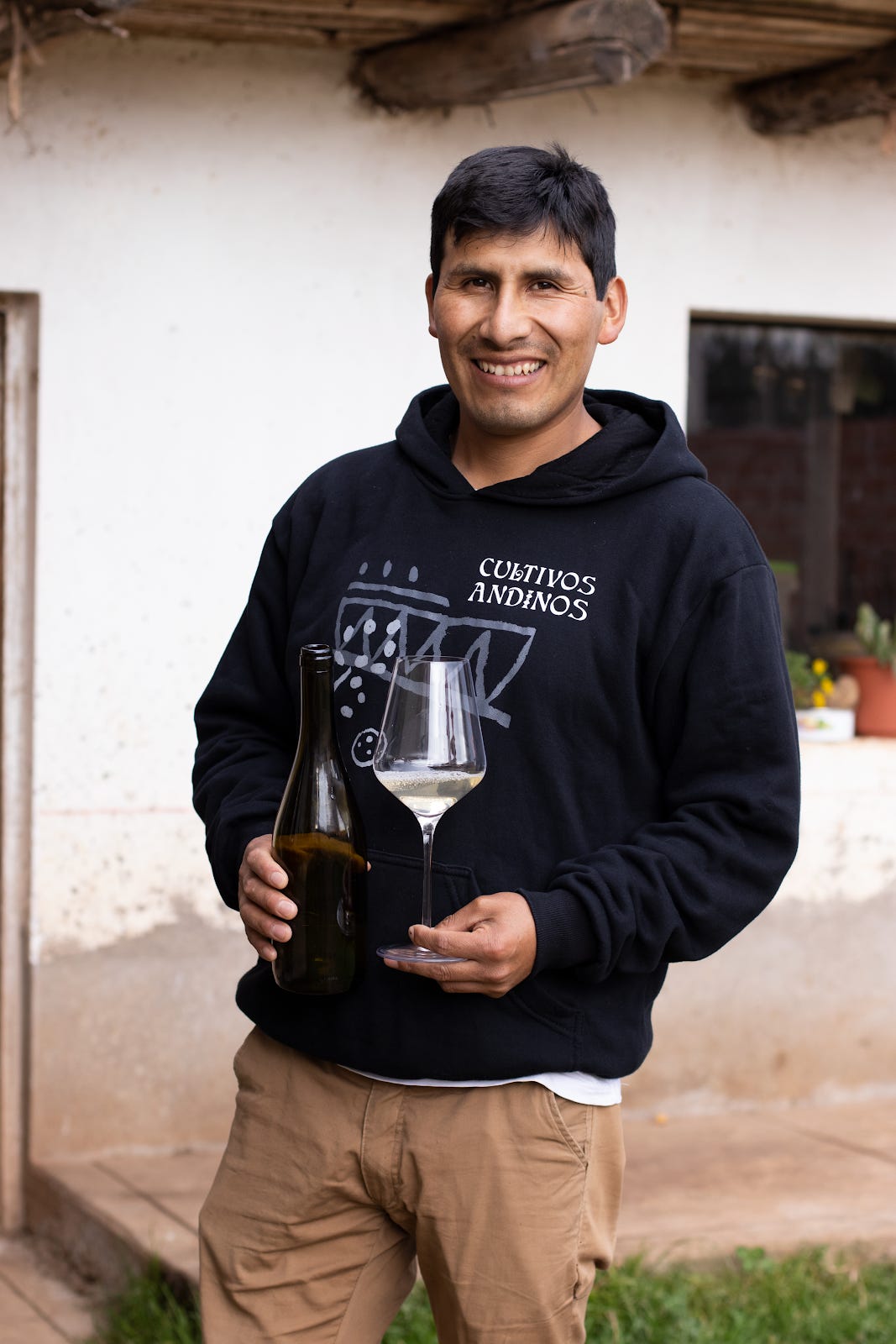Protecting the Future of Peruvian Root Vegetables
A guest post by Dr. Maria Vivanco about Manuel Choqque and the Chinchero district.
We are thrilled to feature this guest post by Dr. Maria Vivanco, a Gender and Agriculture Specialist from Peru with ten years of experience as a researcher and consultant for the public and private sectors in agriculture, biodiversity, international development, and gender. In framing her work and identity she writes,
Although my academic passion is focused on decoloniality, indigenous knowledge, and Andean agriculture, I do not consider myself an Andean person. My connection with the Andean territory and societies is through my paternal relatives that lived in Apurimac and Cusco and built a sense of pride in me of their heritage. My connection with the Andean world was not indirect anymore when I had the opportunity to meet the famous yachachiq (YAH-CHAH-CHEEK) (“those who have the knowledge and teach others” in Quechua) while doing fieldwork in Cusco from 2010 to 2012.
On a recent call she told us about a friend and food advocage of hers in Peru who we were eager to learn more about. The entry below is her description of his efforts and the signifance of protecting the Chinchero district.
Manuel is a fourth-generation farmer from the Choqque family in the Peruvian Andes. His home is located in the village of Huatata in Cusco, a place — as he describes— that has a series of elements to produce delicious and diverse tubers, which can become a promising spot for foods with quality and identity. The altitude of Huatata is approximately 3740 masl. with an average daily temperature of 16 Celcius (60 Fahrenheit), which is balanced with 14 hours of cold temperatures the rest of the day.

If Peru is calculated to have 4000-6000 varieties of potatoes, Manuel has 380 varieties in his 10 hectares.
But he also has a unique species of tuber, which is a relative of potatoes: oca.
Oxalis tuberosa, commonly known as oca, is a nutritious root vegetable native to the Andes region of South America. This crop has faced many challenges from it’s growth prohibition during colonial times to government neglect to and consumer rejection because it’s Indigenous peoples’ food. Nevertheless, other countries like New Zealand cultivate it and even call this native Andean crop a New Zealand yam. Ocas have the texture of a vegetable and can even be eaten raw.
Manuel’s agricultural engineering background and previous work in local and international innovation centers make him consider the full potential of the crop for nutritional and local businesses.
Nutritious profile
Oca is relatively low in calories and has a low glycemic index, making it a suitable option for people trying to manage their calorie intake. Furthermore, it provides fiber, carbohydrates, and energy as starch. It is rich in vitamin C, which is important for immune function and skin health, along with as potassium, which is essential for maintaining healthy blood pressure, calcium, and iron — all vital for bone and blood health, respectively. In addition, Oca contains antioxidants, such as anthocyanins that can help prevent oxidative damage to cells.

It is a versatile crop since it can be cooked in various ways, including boiling, roasting, or frying, making it a multifaceted ingredient used in different dishes.
While we would expect Peruvian people to be food secure, this country had the lowest score during 2022 for the Latam region, according to the last FAO report.
Local business potential
When exposed to the sun, Ocas acquired a sweet flavor which motivated Manuel to experiment with its fermentation. Moreover, there are four distinguished colors of Ocas: red, pink, orange, and white, which remind him of wine types. Although it is called wine to capture the attention of gastronomic experts and consumers, this new product has acquired a new name that reflects its unique location and type: “Oxalis”. National and international sommeliers have tasted Manuel's wine in blind tasting sessions in which Oca's juice was treated as grapes before he revealed its true source. Manuel revealed how exciting it was for him to listen to experts giving compliments on a product that took years and sacrifices to achieve this level of quality.
The never-ending debates and plans for the Chinchero district
Huatata is not only a village, is a peasant community in the Chinchero district, and Urubamba province in Cusco. A long-standing controversy exists in the region since the proposal of a Chinchero International Airport project in the early 2010s to serve as an international gateway to the Cusco region, a popular tourist destination due to its proximity to Machu Picchu and other historical sites.
The airport project faced opposition from some local communities and Indigenous groups in the Chinchero area. Concerns included potential environmental impacts, land expropriation, and the preservation of cultural heritage. Critics of the project raised concerns about the potential ecological impact on the surrounding area, including its impact on water resources and the fragile ecosystem of the high-altitude Andean region. Land expropriation and compensation issues were a significant source of contention. Local landowners and Indigenous communities felt they were not adequately compensated for the land needed for the airport construction.
Chinchero is known for its historical and cultural significance, and there were concerns about the potential impact of the airport on archaeological sites and local traditions. However, the debates are not around the potential of the area for its agriculture and local business that can bring better opportunities to Indigenous peoples.
Recognising local experts and produce
My hope as a Peruvian is that local and individual initiatives like Manuel’s can be recognised for the creativity they bring to the table, making places like Huatata a gastronomic destination not only for tourists but also for other Peruvians that have the right to enjoy the diversity of our land. Moreover, to promote research in the area and motivate a new generation of farmers and scientists in Huatata that can turn into specialists in what their ancestors have domesticated and gifted them.
We hope you’ll consider learning more and engaging directly with Dr. Vivanco and Manuel’s content.
You can also view more captivating images from the photographers mentioned in the captions above:
If you found this insightful, inspiring, or thought-prokoking in any way…
We’d love to hear your thoughts below. We’ll respond!
The Proven Sustainable™ Conversation Series is a fiscally sponsored project of the Center for Transformative Action, a 501(c)3 tax-exempt organization.





